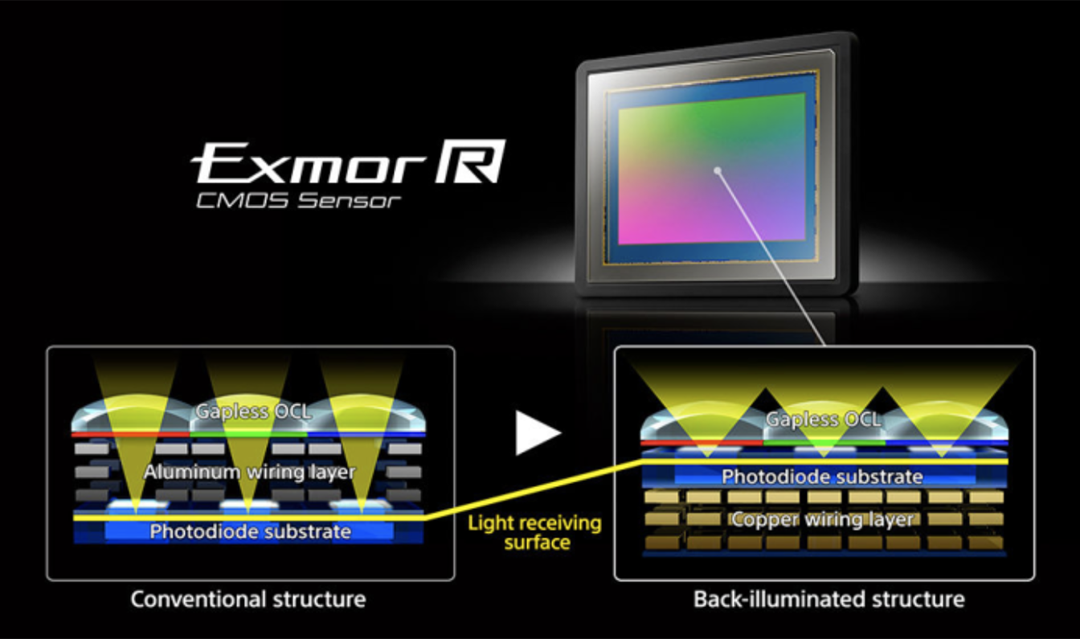Let’s look briefly at the change between front and back illuminated sensors and why there is such a great improvement. The image below, taken from the Sony site, on the left shows the active matrix and wiring on the front surface which reduces the amount of light captured. Whereas by moving the active matrix behind the photodiodes the amount of light collected is increased by 50% or in photography terms half a stop.

How much do you rely on sensor technology and does your workflow bring out the best in your photography and video? It’s an interesting question and I’ll be making a comparison between a camera I have owned for over 5 years and the newer generation with a BSI technology.
Post Production
We have not to forget the improvements made in software programs such as Capture One, Photoshop, Lightroom, Affinity, Final Cut Pro, Adobe Premiere Pro and DaVinci Resolve. As sensor technology has been improved newer lenses have been designed to match the resolution. In the past when digital backs were launched there were very few medium format lenses with the sharpness required. In fact the sensors showed issues with many lenses.
Software developers cater for all genres of photography and provide a wide range of features and functionality e.g. correction for lens chromatic aberration, sharpness and contrast. There is a plethora of tone curves you can add to your images but first I would advise correcting all your images and balancing them before you apply anything. To have a starting point with the correct grey balance and colour temperature will enable you to revert back to your default. This is my workflow and has been successful for many years.
RAW files, What’s it all about?
Shooting RAW will always be beneficial for photographers and videographers that wish to produce the best quality image possible. I have captured RAW files ever since using the Leaf DCBII digital camera back, also when using Phase One, Canon, Nikon and Sony, for me RAW is the only way as it not only captures the most data, you also have a much larger scope when editing and apply colour in your workflow.
The benefits are clear. A RAW file will give you the ability to repurpose the file size, adjust the colour profiles more accurately and with most systems today if exposed correctly will be a cleaner file. Our workflow chart below will build out into a productive workflow.

I’m not just going to talk about the technology, now I’ve set the scene I will be showing you some samples of the work achieved with camera equipment I have owned – and some of the newer technology manufacturers have supplied for testing.
The first shoot was at a golf club and the second at a hotel. You’ll soon see the benefits of shooting RAW, using a high quality sensor and creating a workflow.
Next Blog… ‘Using the Sony Sensor’







